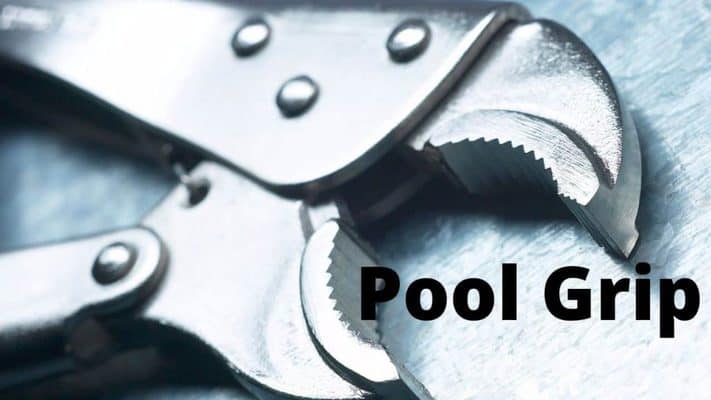Introduction to the Pool Stroke.
So let’s learn together how to improve your pool stroke and take your game to the next level.
The pool stroke is one of the most important aspects of playing successful pool. Without a great stroke, you can never produce the needed consistency and accuracy needed for top class play.
The terms cue action and stroke are used interchangeably throughout this article. Pool players tend to use “stroke” and snooker players use “cue action.
My Pool Stroke Over The Years.
Over the years that I’ve been playing snooker and pool, I’ve always tried hard to play well with the cue action that I already had. I didn’t think that I had a cue action problem or at least if I did it was a minor one at most.
For some reason, I always imagined that my stroke was good and that it was my aim that was off. However, this is usually incorrect, most players will learn how to aim correctly over time but their cue action can be poor for a lifetime.
I had it in mind, although not consciously, that my cue action was good. I thought that my stroke was straight and that I was doing it the right way. The game needed to fit itself around my physical form, and my mechanical alignment …. Perfect!
Self Coaching Using Video.
How to improve your pool stroke using video. Recently I took some video footage of myself practicing and I saw that there are several areas that could do with some improvement. Most of which were make stroking in a straight line quite difficult.
When an action needs to be consistently produced time after time, the fewer variables the better.
Why To Do A Video Analysis of Your Stroke.
I will need to analyze my stroke on video so I can see what’s wrong with it in order to make the necessary changes.
Recently however I took some video footage of myself practicing and I saw that there are several areas that could do with some improvement.
Most of which were make stroking in a straight line quite difficult.
How To Do A Video Analysis of Your Stroke.
Where To Take The Video Footage?
Ok, so I have an 8-foot gold crown table in the living room in my house. I’ve made some marks on it so that I can anticipate which shots I am going to make and which ones I’m not.
I am not saying that this can’t be done at a pool hall but usually, it is difficult to video with equipment without being disturbed.
There is also an element of added pressure when people are watching you play on camera.
Setting Up The Pool Table.
I have drawn a line diagonally across the table with removable construction chalk. I’m place spots on the chalk line which can be made from hole reinforcer rings you can buy at the stationery store.
This will ensure that the shots are all taken from the same position when recorded on video. The same shot from the same position each time.
Setting Up The Camera.
I have a camera at the far end of one diagonal line and I will shoot him from the other end of the line. The camera is nothing special just my cell phone on a tripod. I am pointing the camera in such a way that I can see my stroke clearly from the front.
I will also have my laptop computer on the table. This is so I can have immediate feedback, as I look at the computer screen I can make sure that the view from the camera is the one that I want to see.
Method – What To Record On Video?
As I said in a previous article, I have to eliminate my aiming from the whole equation so that I can record straight on my stroke. In other words, I will be playing straight in stop shots, run-throughs and drawbacks.
Straight in shots will eliminate the need to aim other than lining up center ball. Straight shots, again and again, until I get a complete idea of what is going on with my stroke.
Straight shots eliminate the variables.
I will take the shots from the front and then I will take some video also from the side. These will show my hand, arm shoulder and elbow in relation to the shot.
If the camera and computer are set up properly, I should be able to look at my stroke and see what’s happening at different parts of the stroke all the way from the set, through the pause and the finish.
With this information, I should be able to work out what is going wrong and what I will need to do to fix my cue action.
Looking at the Video.
Cue Alignment.
When I looked at the videos, I noticed that my cue would go off the shot line as I struck the ball.
I thought to myself “what does that matter” I’ve already hit the ball. The ball has moved away and the cue tip is following through. Why should that matter?
If my cue is going offline as it hits the ball and continues to move offline as it goes through the ball then unless I hit the ball at that precise moment in time, every time, I will get a different result. My cue was crossing the shot line.
Full Stance.
As I moved into full stance, my cue was already moving, there was no set position, no moment of rest.
No checking to make sure that my cue was actually online before I started my stroke in motion.
Shoulder Position.
After striking the ball, my shoulder drops which isn’t on its by itself a problem. However, my shoulder also moves out to the right on follow through.
This unwanted movement comes from the shoulder and seems to increase with shot power.
My elbow moving to the right making the cue tip tend to veer towards the left.
Wrist Position.
My wrist is tucking in towards the inside (left) as my elbow moves outward towards the (right.) These movements will equal out in some instances but rarely will they coincide to result in a straight line.
Hand Grip.
My grip is as it should be, but seems to tighten up on the follow-through. The hand tightens as the wrist turns inwards.
How I Learned To Play.
But when I learned to play snooker they were no videos. No computers and certainly I didn’t have the massive vault of information available on YouTube today.
Most professionals and top amateurs were trying to relieve me of my hard earned money rather than give me any tips on technique or tactics.
“Pot Black” was on TV in black and white.
Joe Davis had one or two books out, I think one was called “Advance snooker for the average player.”
“How I play snooker.” was another title by Joe.
Most of my technique and cue action came out of those two books. These books are still available and worth a read, they give an interesting perspective into a professional sport in its infancy.
So listening to my critics wasn’t doing me any good!
Over the years people had told me that I had a good cue action. But I think they were actually referring to the way my cue moved. What they were really looking at was my rhythm and timing rather than my ability to go through the ball in a straight line.
These two things are entirely different, although if you could perform both of them well it would be a great plus to your game.
For instance, I have seen a few strokes that looked terrible but were very effective and vice versa.
Bad Advice That Seems To Be Positive.
So listening to my critics wasn’t doing me any good. I just carried on regardless hoping that one day things would get better. If I just kept practicing all of the time I would somehow achieve success.
Of course, in pool and life in general that’s not the case, in fact, I think it was Albert Einstein that said “continuing to do the same thing over and over again expecting a different result is a sign of insanity”.
However, in my defense, I wasn’t really aware that I had a problem!
So It’s Back To The Drawing Board.
Recently, especially since I started playing again, I have taken major steps to rebuild my game with the aid of video footage taken of myself while practicing. Using phone video and mirrors so that I can look at the side.
So I assume that my game would benefit from some personal coaching, but I think personal coaching at this point would be a waste of time until I can get these fundamentals down pat.
Don’t Try To Reinvent The Wheel.
Obviously while rebuilding my stroke I’ve tried to use some professional players as good examples. I was looking for a stroke demonstrated by players whose mechanics are simple and basic. A solid stroke that gets the job done every time and doesn’t fall apart under pressure.
Simple, precise and repeatable cue action.
I have noticed that professional players do things the simple way. The pros who are successful have no flamboyance in their stroke, no jumping up, waving their arms around, lunging into the shots, or finishing with their cue in the air.
At the time of writing an example of a player with the simplest most straight forward cue action that I can find would be probably the best player in the world. Joshua filler of German. Filler’s stroke is very simple, it has hardly any unnecessary movement at all. Joshua stays down, he stays in line and just has a very compact, efficient pool cue action.
One of the other players whose alignment of his cue, head, eyes, elbow, wrist is perfectly in line when you look at him from an overhead view is Jason Shaw. Jason demonstrates a very simple cue action, there’s nothing flashy or flamboyant about his movements.
Elbow Drop Yes or No?
Some coaches teach the pendulum stroke, the simple:
- Set
- Pause
- Finish
This seems to be a reliable simple way the stroke the ball and with as few moving parts as possible, it is simple to teach and learn. However, I feel that it is possible to get a smoother cue action and to get a greater flow with an elbow drop.
To be clear, most top players will drop their elbow slightly on power shots. It is almost an extension of the follow-through motion.
Eklent Kaci and Fedor Gorst from Russia are young players who also demonstrate very simple cue actions however Fedor does have quite a pronounced elbow drop.
The bottom line is that if your elbow drops naturally that will work for you. If you don’t drop your elbow naturally, then trying to manufacture an artificial motion will probably not work.




im doing the same thing, videoing my stroke. Found I dropped my shoulder quite a bit.
Thanks